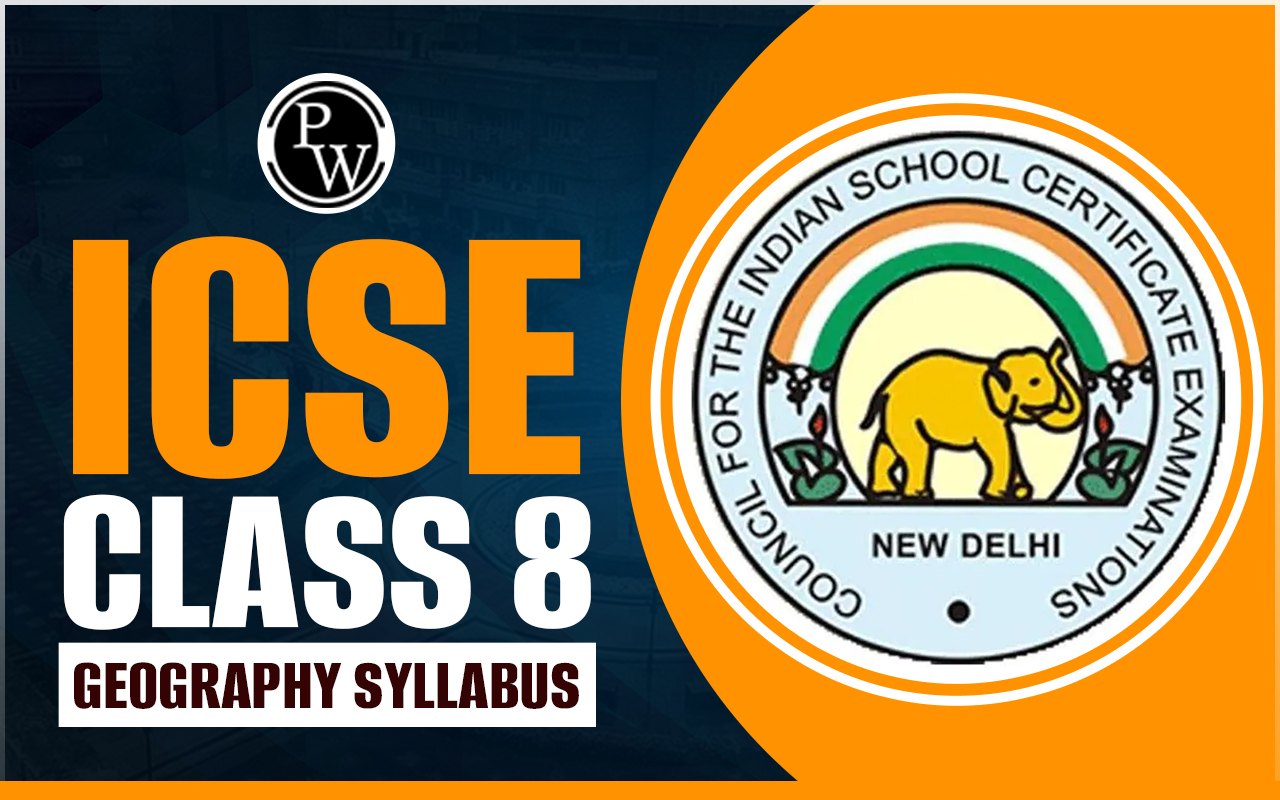

ICSE Class 8 Maths Selina Solutions Chapter 17: In ICSE Class 8 Maths Selina Solutions Chapter 17, "Special Types of Quadrilaterals," you'll learn about different kinds of four-sided shapes with unique features.
It covers shapes like parallelograms, rectangles, squares, rhombuses, and trapeziums. The chapter explains how to recognize each type, calculate their perimeter and area, and solve problems related to them. It also shows how these shapes are used in real-life situations, making geometry easier to understand with clear explanations and examples.ICSE Class 8 Maths Selina Solutions Chapter 17 Special Types of Quadrilaterals Overview
The solutions for ICSE Class 8 Maths Selina Solutions Chapter 17, "Special Types of Quadrilaterals," are created by subject experts from Physics Wallah. This chapter teaches about different kinds of four-sided shapes like parallelograms, rectangles, squares, rhombuses, and trapeziums. The solutions help students understand how to recognize each type of shape, learn their specific features, and use formulas to find their perimeter and area accurately. They are designed to make geometry easier to understand, improve problem-solving skills, and prepare students well for exams.Special Types of Quadrilaterals
"Special Types of Quadrilaterals" refers to specific categories of four-sided shapes that have distinct properties and characteristics. Here's a detailed overview:Parallelogram :
- Definition : A parallelogram is a quadrilateral where opposite sides are parallel and equal in length.
- Properties : Opposite sides are equal and parallel, opposite angles are equal, consecutive angles are supplementary (add up to 180 degrees).
- Formulas : Perimeter = 2 × (length + breadth), Area = base × height.
Rectangle :
- Definition : A rectangle is a parallelogram with four right angles.
- Properties : Opposite sides are equal and parallel, all angles are right angles (90 degrees).
- Formulas : Perimeter = 2 × (length + breadth), Area = length × breadth.
Square :
- Definition : A square is a rectangle with all sides equal in length.
- Properties : All sides are equal, all angles are right angles (90 degrees), diagonals are equal and bisect each other at right angles.
- Formulas : Perimeter = 4 × side length, Area = side length².
Rhombus :
- Definition : A rhombus is a parallelogram with all sides equal in length.
- Properties : Opposite sides are parallel, all sides are equal, diagonals bisect each other at right angles.
- Formulas : Perimeter = 4 × side length, Area = (diagonal₁ × diagonal₂) / 2.
Trapezium (Trapezoid) :
- Definition : A trapezium is a quadrilateral with exactly one pair of parallel sides.
- Properties : One pair of opposite sides is parallel, other sides are not parallel.
- Formulas : Area = ½ × (sum of parallel sides) × height.
ICSE Class 8 Maths Selina Solutions Chapter 17 PDF
You can find the PDF link for ICSE Class 8 Maths Selina Solutions Chapter 17 below. This PDF contains detailed solutions and explanations for special types of quadrilaterals, including parallelograms, rectangles, squares, rhombuses, and trapeziums. It is a valuable resource for students looking to understand these geometric shapes better and prepare effectively for exams.ICSE Class 8 Maths Selina Solutions Chapter 17 PDF
ICSE Class 8 Maths Selina Solutions for Chapter 17 Special Types of Quadrilaterals
Below we have provided ICSE Class 8 Maths Selina Solutions Chapter 17 Special Types of Quadrilaterals for the ease of the students –ICSE Class 8 Maths Selina Solutions for Chapter 17 Exercise
Question 1.
In parallelogram ABCD, ∠A = 3 times ∠B. Find all the angles of the parallelogram. In the same parallelogram if AB = 5x – 7 and CD = 3x + 1; find the length of CD.
Solution:-
Let ∠B=x ∠A=3∠B=3x AD||BC ∠A+∠B=180° 3x+x=180° ⇒4x=180° ⇒x=45° ∠B=45° Opposite angles of parallelogram are equal.
∠A=∠C=135°
Opposite sides of parallelogram are equal.
AB=CD
5x-7=3x+1
⇒5x-3x=1+7
⇒2x=8
⇒x=4
Opposite angles of parallelogram are equal.
∠A=∠C=135°
Opposite sides of parallelogram are equal.
AB=CD
5x-7=3x+1
⇒5x-3x=1+7
⇒2x=8
⇒x=4

Question 2.
In parallelogram PQRS, ∠Q = (4x – 5)° and ∠S = (3x + 10)° . Calculate: ∠Q and ∠R.
Solution:-
In parallelogram PQRS, ∠Q = (4x – 5)° and ∠S = (3x + 10)° Opposite ∠s of parallelogram are equal ∠Q=∠S 4x-5=3x+10 4x-3x=10+5 x=15
Question 3.
In rhombus ABCD:
(i) If ∠A=74°; find ∠B and ∠C. (ii) If AD=7.5cm; find BC and CD.Solution:-
AD‖BC ∠A+∠B=180° 74°+∠B=180° ∠B=180°-74°=106° Opposite angles of Rhombus are equal. ∠A=∠C=74° Sides of Rhombus are equal. BC=CD=AD=7.5cm (i) ∠B=106°; ∠C=74° (ii) Ans: BC=7.5cm and CD=7.5cmQuestion 4
In square PORS:
(i) If PQ = 3x – 7 and QR = x + 3; find PS
Solution:-
(i) Sides of square are equal. PQ=QR 3x-7=x+3 3x-x=3+7 2x=10 x=5
Solution:-
(ii) PR = 5x and QR = 9x – 8. PR=QS 5x=9x-8 ⇒5x-9x=-8 ⇒-4x=-8 ⇒x=2Question 5.
ABCD is a rectangle, if ∠BPC = 124°
Calculate: (1) ∠BAP (ii) ∠ADP
Solution:-
Diagonals of rectangle are equal and bisect each other. ∠PBC=∠PCB=x (say) But ∠BPC+∠PBC+∠PCB=180° 124°+x+x=180° 2x=180°-124° 2x=56° ⇒x=28° ∠PBC=28° But ∠PBC=∠ADP [Alternate ∠S] ∠ADP=28° Again ∠APB=180°-124°=56°
Question 6.
ABCD is a rhombus. If ∠BAC = 38°, find:
(i) ∠ACB (ii) ∠DAC (iii) ∠ADCSolution:-
ABCD is Rhombus (Given) AB = BC ∠BAC = ∠ACB (∠S opp. to equal sides) But ∠BAC = 38° (Given) ∠ACB = 38° In ΔABC, ∠ABC + ∠BAC + ∠ACB = 180° ∠ABC + 38°+ 38° = 180° ∠ABC = 180°- 76° = 104° ∠ADC = ∠ABC (Opp.∠s of rhombus) ∠ADC = 104°∠DAC = ∠DCA (AD = CD) ∠DAC= ½ [180° – 104°] ∠DAC = ½ × 76° = 38°Question 7.
ABCD is a rhombus. If ∠BCA = 35°. Find ∠ADC.
Solution:-
Given: Rhombus ABCD in which ∠BCA = 35° To find: ∠ADC Proof: AD II‖BC ∠DAC = ∠BCA (Alternate ∠S) But ∠BCA = 35° (Given) ∠DAC = 35° But ∠DAC = ∠ACD (AD = CD) & ∠DAC + ∠ACD + ∠ADC = 180° ∠B° + 35° + ∠ACD = 180° ∠ADC = 180° – 70° = 110° Hence ∠ADC = 110°Question 8.
PQRS is a parallelogram whose diagonals intersect at M.
∠PMS=54°, ∠OSR=25° and ∠SOR=30°; (i) ∠RPS (ii) ∠PRS (iii) ∠PSRSolution:-
Given: Parallelogram PQRS in which diagonals PR 8 OS intersect at M.
∠PMS=54°; ∠OSR=25° and ∠SQR=30° To find: (i) ∠RPS (ii) ∠PRS (iii) ∠PSR Proof: QR II PS ⇒>PSQ=∠SQR (Alternate ∠S) But ∠SOR=30° ∠PSQ=30° In ΔSMP, ∠PMS+∠PSM+∠MPS=180° or 54°+30°+∠RPS=180° ∠RPS=180°-84°=96° Now, ∠PRS+∠RSQ=∠PMS ∠PRS+25°=54° ∠PRS=54°-25°=29° ∠PSR=∠PSQ+∠RSQ=30°+25°=55° Hence, (i) ∠RPS=96° (ii) ∠PRS=29° (iii) ∠PSR=55°Question 9.
Given: Parallelogram ABCD in which diagonals AC and BD intersect at M. Prove: M is mid-point of LN.
Solution:-
Proof: Diagonals of parallelogram bisect each other MD= MB Also ∠ADB=∠DBN (Alternate ∠S) &∠DML=∠BMN (ert. opp. ∠S) ΔDML=ΔBMN LM=MN M is mid-point of LN. Hence proved.Question 10
In an isosceles-trapezium, show that the opposite angles are supplementary.
Solution:
Given: ABCD is isosceles trapezium in which AD = BC To Prove: (i) ∠A + ∠C = 180 (ii) ∠ B + ∠D = 180° Proof: AB ‖ CD ⇒∠A + ∠D = 180 But ∠A = ∠B [Trapezium is isosceles)] ∠B + ∠D = 180° Similarly ∠A + ∠C = 180° Hence the result.Question 11.
ABCD is a parallelogram. What kind of quadrilateral is it if:
(i) AC=BD and AC is perpendicular to BD? (ii) AC is perpendicular to BD but is not equal to it? (iii) AC=BD but AC is not perpendicular to BD?Solution:-
(i) AC=BD (Given)Question 12.
Prove that the diagonals of a parallelogram bisect each other.
Solution:-
Given: Parallelogram ABCD in which diagonals AC and BD bisect each other.
To Prove: OA=OC and OB=OD
Proof: AB‖CD (Given)
∠1=∠2 (Alternate ∠S) ∠3=∠4= (Alternate ∠S And AB=CD (opposite sides of parallelogram) ΔCOD=ΔAOB (A.S.A rule) OA=OC and OB=OD Hence the result.Question 13.
If the diagonals of a parallelogram are of equal lengths, the parallelogram is a rectangle. Prove it.
Solution:-
Given: parallelogram ABCD in which AC=BD To Prove: ABCD is rectangle Proof: In ∆ABC and ∆ABD AB=AB (Common) AC=BD (Given) BC=AD (Opposite sides of parallelogram) ΔABC=ΔABD (S.S.S. Rule) ∠A=∠B But AD //BC (opp. sides of ll gm are ∠A+∠B=180° ∠A=∠B=90° Similarly ∠D=∠C=90° Hence ABCD is a rectangle.Question 14.
In parallelogram ABCD, E is the mid-point of AD and F is the mid-point of BC. Prove that BFDE is a parallelogram.
Solution:-
Given: Parallelogram ABCD in which E and F are mid-points of AD and BCTo Prove: BFDE is a parallelogram.
Proof: E is mid-point of AD. (Given)
 BF=DE
Again AD‖BC
DE‖BF
NowDE ‖BF and DE=BF
Hence BFDE is a parallelogram.
BF=DE
Again AD‖BC
DE‖BF
NowDE ‖BF and DE=BF
Hence BFDE is a parallelogram.
Question 15.
In parallelogram ABCD, E is the mid-point of side AB and CE bisects angle BCD. Prove that:
(i) AE=AD. (ii) DE bisects and ∠ADC and (iii) Angle DEC is a right angle.Solution:-
Given: || gm ABCD in which E is mid-point of AB and CE bisects ZBCD.
To Prove : (i) AE=AD
(ii) DE bisects ∠ADC (iii) ∠DEC=90° Const. Join DE Proof: (i) AB‖CD (Given) And CE bisects it. ∠1=∠3 (Alternate ∠S)…… (i) But ∠1=∠2 (Given) ……… (ii) From (i) & (ii) ∠2=∠3 BC=BE (Sides opp. to equal angles) But BC=AD (opp. sides of ‖gm) and BE=AE( Given )AD=AE
∠4=∠5 (∠S opp. to equal sides) But ∠5=∠6 (alternate ∠S ⇒∠4=∠6DE bisects ∠ADC.
NOW AD //BC ⇒∠D+∠C=180° 2∠6+2∠1=180° DE and CE are bisectors.
Benefits of ICSE Class 8 Maths Selina Solutions Chapter 17 Special Types of Quadrilaterals
- Clear Understanding : The solutions provide clear explanations and examples that help students understand the distinct properties of different quadrilaterals such as parallelograms, rectangles, squares, rhombuses, and trapeziums.
- Step-by-Step Guidance : Students receive step-by-step guidance on how to identify each type of quadrilateral and apply specific formulas to calculate perimeter and area accurately.
- Improved Problem-Solving Skills : By practicing with these solutions, students enhance their ability to solve complex geometric problems involving special types of quadrilaterals.
- Preparation for Exams : The chapter prepares students comprehensively for exams by covering all essential topics and providing practice exercises that reinforce learning and application of geometric principles.
- Builds Confidence : Mastery of these concepts boosts students confidence in handling geometric problems, leading to improved performance in mathematics.
ICSE Class 8 Maths Selina Solutions Chapter 17 FAQs
What is a parallelogram?
How is a rectangle different from a square?
What are the properties of a square?
What is a rhombus?
How can I distinguish between different types of quadrilaterals?












